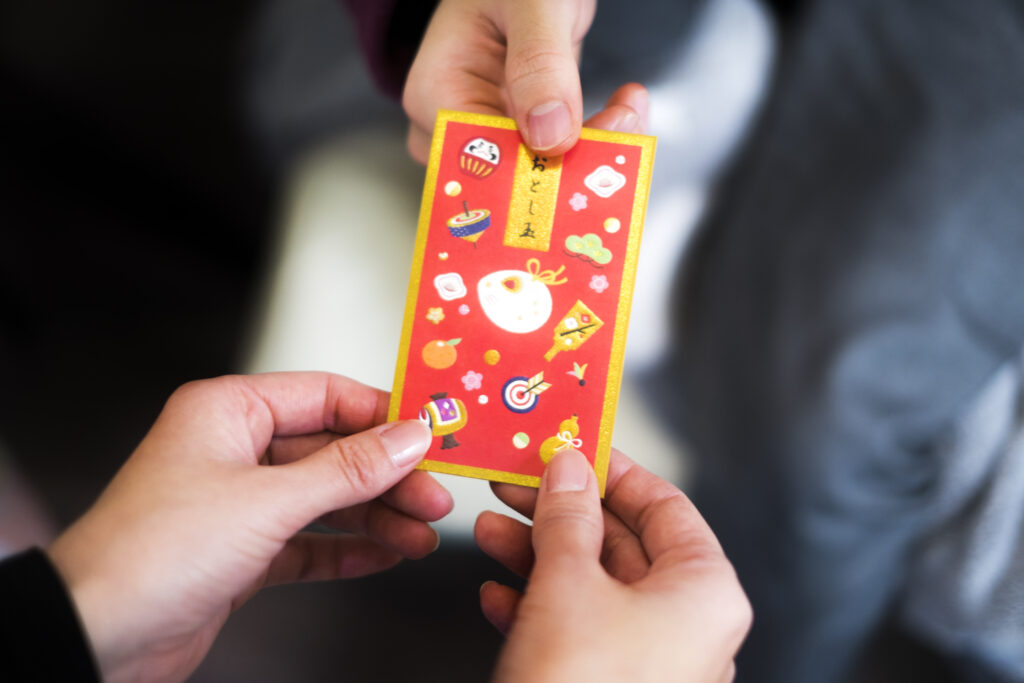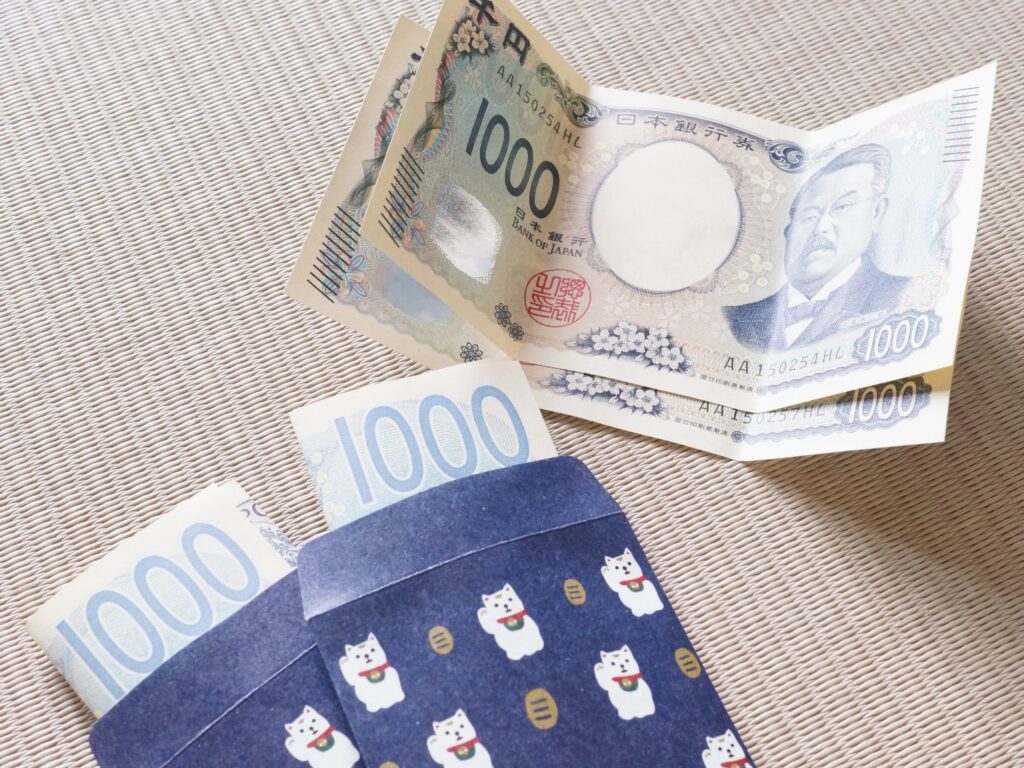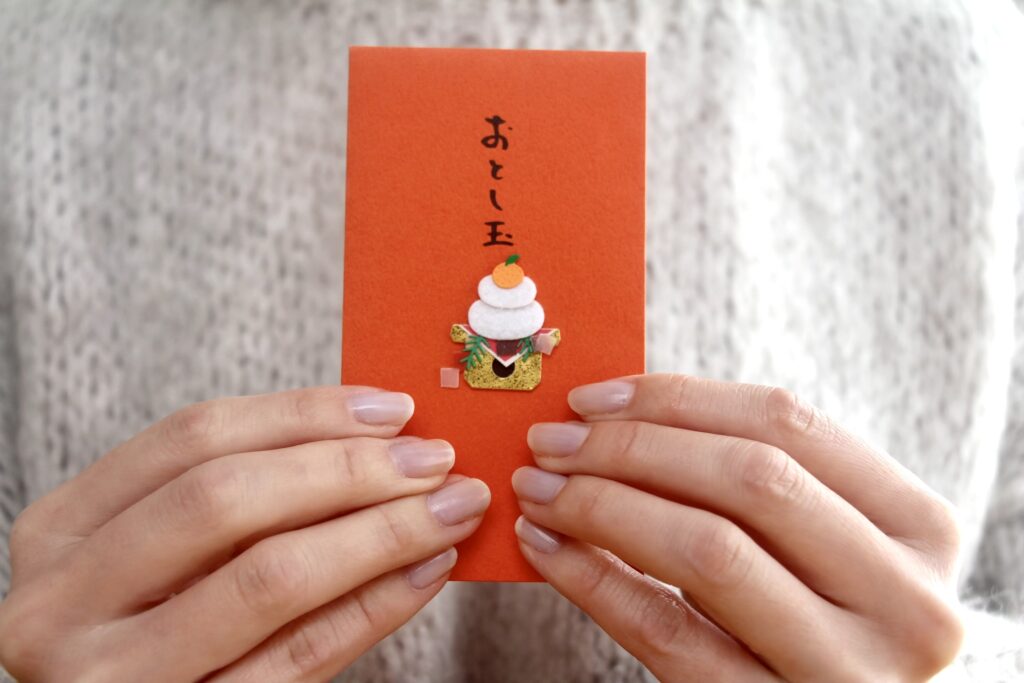In Japan, New Year’s Day brings a special treat for children—otoshidama, a monetary gift from parents, grandparents, and close family friends. Some believe this cherished tradition stems from Shinto customs, where offerings were made to deities and ancestors during the New Year. As a result, it is also thought that giving money to children serves as an offering to the toshigami, the gods of the New Year, who, in turn, bless them with protection and good fortune.

The art of giving otoshidama
Otoshidama is presented in pochibukuro, small, beautifully designed envelopes sold at supermarkets and stationery stores during the season. The amount given varies by age, but below are the general guidelines.
- Toddlers & kindergarteners: 1,000–2,000 yen
- Elementary schoolers: 3,000–5,000 yen
- Junior high schoolers (12–15 years old): 5,000–10,000 yen
- High schoolers (16–18 years old): 10,000 yen or more
While some continue giving otoshidama through university, others stop once a child reaches adulthood (typically 20 years old) or starts working.

More than just pocket money
Amounts vary based on relationships, with close relatives often giving more and friends or acquaintances offering smaller sums. Some parents use otoshidama to teach financial responsibility, encouraging teens to save or invest their gifts rather than spend them immediately.
For children across Japan, receiving otoshidama is a New Year’s highlight, eagerly awaited as they dream of how to spend—or save—their festive fortune.

